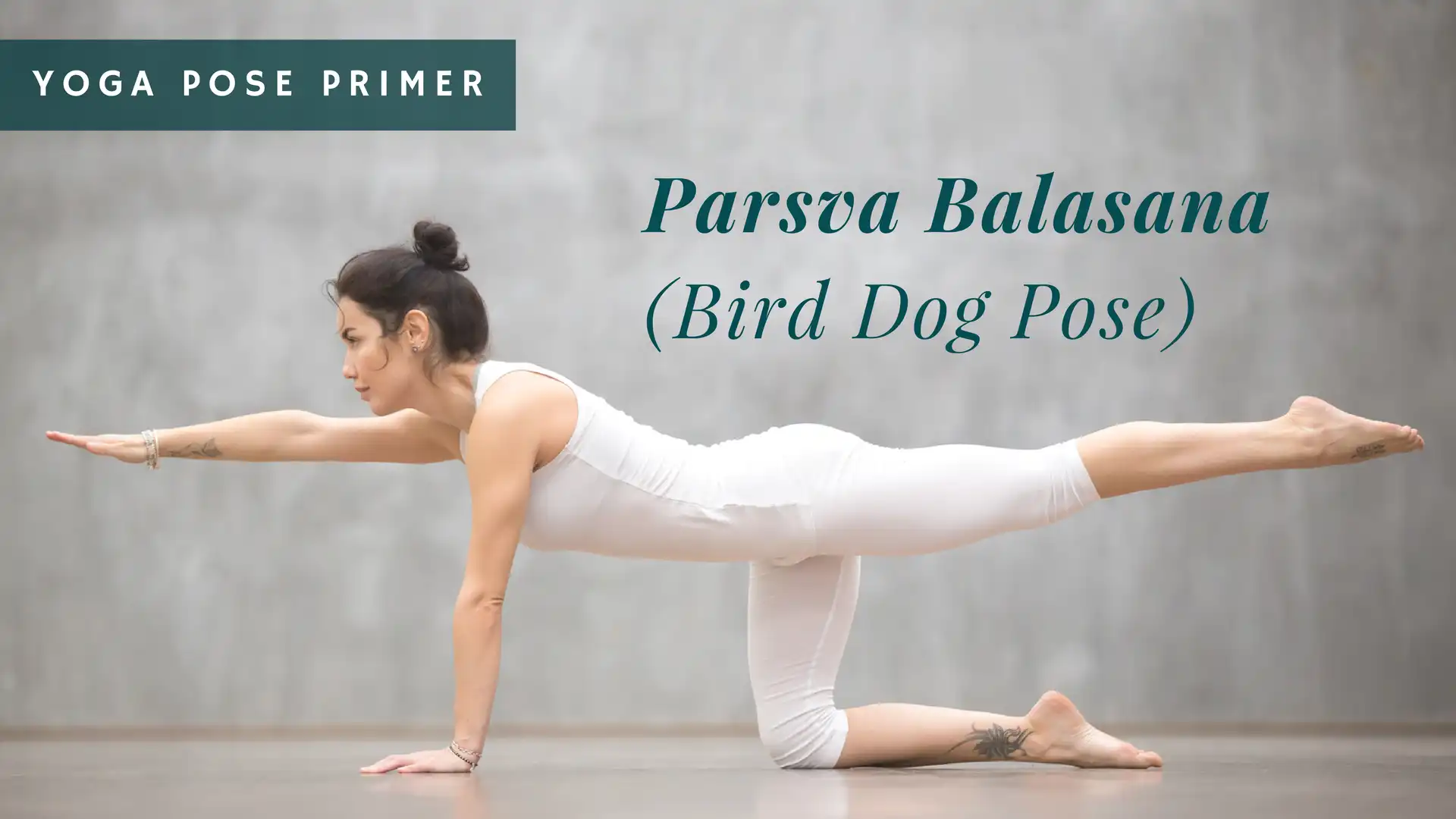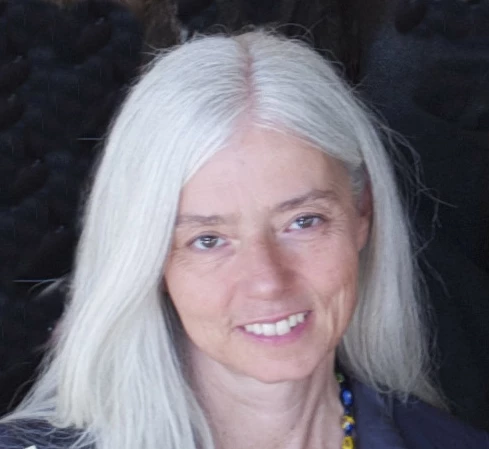Yoga Pose Primer: Parsva Balasana (Bird Dog Pose)

Chances are Bird Dog Pose (Parsva Balasana) does not have a 2,000-year history in the yoga tradition. More likely, the concept of a bird dog— a symbol of one of their favorite pastimes—may have come from the British who colonized India, as did so many of yoga’s more gymnastic poses.
This doesn’t diminish its value, however.
Bird Dog Pose (Parsva Balasana) Benefits:

- Strengthens and stabilizes the core.
- Strengthens the low back.
- Challenges, and therefore increases your ability to balance.
- It may promote balance between your brain’s right and left lobes through the contralateral relationships between the arms and legs.
As a core stabilizer, Bird Dog Pose is easier on your back than crunches or sit-ups. The key to engaging your core in Bird Dog Pose is to remember to use your hyoid bone. A small, u-shaped bone at the top of your throat, the hyoid bone is best known for its influence on swallowing. However, this small bone—the only bone in the body not directly connected to another bone—is also key in determining our posture.
When the hyoid bone is drawn in at the top of the throat, the whole digestive system and core muscles tone back to give frontal support to your spine. When the hyoid bone pushes forward, as it does when you throw your head back, these structures push into your front body. Try this experiment:
- Lie on your abdomen on a yoga mat.
- Lift into Sphinx Pose so that your forearms support you.
- Tilt your head back as far as it will go, and be aware of how your abdomen rests on your mat.
- Now, lift your head to an upright position so that you look straight ahead.
- Draw the hyoid bone back at the top of your throat and feel what happens in your abdomen.
- Go back and forth between the two head positions to feel the difference in your core.
I discuss in detail the importance of hyoid bone positioning in an article about Chaturanga Dandasana. It’s critical to understand the relationship between your head position and core stability in pretty much every yoga asana. But in prone poses such as Bhujangasana (Cobra Pose), Urdva Mukha Svanasana (Upward Facing Dog Pose), Chaturanga Dandasana and Bird Dog Pose, it’s especially important since your core is especially subject to the pull of gravity and the weight can put stress on your spine. Drawing your hyoid bone back causes your core to tone back into your spine, stabilizing your core and protecting your spine.
How to Practice Bird Dog Pose (Parsva Balasana)

- Come to your hands and knees on a nonskid yoga mat. You may want to place a yoga blanket under your knees for extra padding.
- Extend your right leg straight back, straightening your knee. There’s no need to try to lift the leg above your pelvis. This can actually cause stress in your low back. Let your leg be parallel to the floor.
- Extend your left arm forward, straightening your elbow. Again, there’s no need to hyperextend your shoulder joint by lifting your hand higher than your torso.
- Ground firmly through your right palm and left knee, shin, and foot, rooting them into your mat.
- Simultaneously extend the right leg backward and left arm forward, keeping the back of your neck long and drawing your hyoid bone back into the throat.
- Stay for 5 to 10 deep breaths, continuing to ground the right palm and left knee, shin and foot as you extend the left arm and right leg.
- Return to all fours. Rest here if you like, feeling the effects of the pose. You can also rest in Balasana (Child’s Pose) if you prefer.
- Practice Bird Dog Pose (Parsva Balasana) on the other side.
Bird Dog Pose is appropriate for all practitioners. Add it to your practice to strengthen and stabilize your lower back and core.
Here’s another yoga pose primer from special contributor Charlotte Bell: Yoga Pose Primer: Anjaneyasana – Reach For The Sun.
And if more on yoga foundations is what you need-Study with YogaUOnline and Natasha Rizopoulos – Foundations of Teaching & Practicing Yoga: Forward Bends and Backbends.
Reprinted with permission from Hugger Mugger Yoga Blog.
 Charlotte Bell began practicing yoga in 1982 and began teaching in 1986. She was certified by B.K.S. Iyengar in 1989 following a trip to Pune. In 1986, she began practicing Insight Meditation with her mentors Pujari and Abhilasha Keays. Her asana classes blend mindfulness with physical movement. Charlotte writes a column for Catalyst Magazine and serves as editor for Yoga U Online. She is the author of two books: Mindful Yoga, Mindful Life and Yoga for Meditators, both published by Rodmell Press. She also edits the Hugger Mugger Yoga Products¹ blog and is a founding board member for GreenTREE Yoga, a non-profit that brings yoga to underserved populations. A lifelong musician, she plays oboe and English horn in the Salt Lake Symphony and the folk sextet Red Rock Rondo, whose 2010 PBS music special won two Emmys.
Charlotte Bell began practicing yoga in 1982 and began teaching in 1986. She was certified by B.K.S. Iyengar in 1989 following a trip to Pune. In 1986, she began practicing Insight Meditation with her mentors Pujari and Abhilasha Keays. Her asana classes blend mindfulness with physical movement. Charlotte writes a column for Catalyst Magazine and serves as editor for Yoga U Online. She is the author of two books: Mindful Yoga, Mindful Life and Yoga for Meditators, both published by Rodmell Press. She also edits the Hugger Mugger Yoga Products¹ blog and is a founding board member for GreenTREE Yoga, a non-profit that brings yoga to underserved populations. A lifelong musician, she plays oboe and English horn in the Salt Lake Symphony and the folk sextet Red Rock Rondo, whose 2010 PBS music special won two Emmys.



